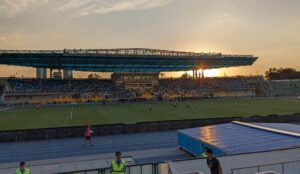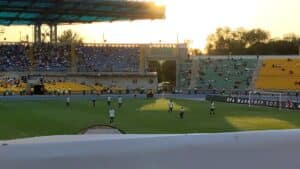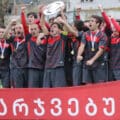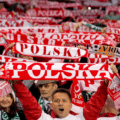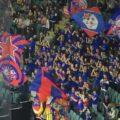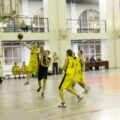For traveling soccer fans, attending a live game is a wonderful way to experience a unique part of local culture. Despite being a truly global sport, soccer has a unique culture everywhere it is played. Whether it be the chants or the food at the concessions, there is always something to learn about the local culture while attending a sporting event.
While in Almaty, I knew I could not pass up the opportunity to watch FC Kairat Almaty play. FC Kairat (“kairat” meaning “courage” in Kazakh) has played in Almaty since 1954, so this was an excellent opportunity for me to learn about Kazakh soccer culture. I noticed a game was coming up at the Almaty Central Stadium and immediately rearranged my schedule to make time to attend.
I attempted to purchase a ticket online but could not with any American credit/debit card, so I planned on buying a ticket at the stadium. Tickets online ranged between 700 tenge ($1.57) and 2200 tenge ($4.93), but there were also VIP tickets in the press booth area for 5200 tenge ($11.64). While the ticket website itself does not tell you who each section is designated for, I assumed that the lower ticket prices would be for the away-team fan area, since the areas for home-team fans tend to have the better view.
After a thirteen-minute taxi ride, ordered through the Yandex Go app for 930 Tenge ($2.10), I got out and began my 5-minute walk to the stadium. All around me were fans wearing FC Kairat jerseys, waving flags and scarves over their heads, and chanting “Я болею за Кайрат” (“I’m cheering for Kairat”).
After turning the corner, I was stunned by the size of the stadium. Like many other places in Almaty, Central Stadium was much larger than it had looked a few hours ago on my phone. First opened in 1958, the stadium seats nearly 24,000. It is surrounded by 54 acres of sports complex that includes training facilities, athletics fields, an ice rink, tourist infrastructure, and more. The stadium has been renovated three times since 1997, usually to be presentable for international sporting events, and so today is in fair shape.
While attempting to find a ticket booth, I realized that everyone around me was purchasing tickets from seemingly random people walking around in front of the team store. I approached one of these men and asked him how much he was selling tickets for, and I was surprised to find out that he was selling tickets for the same price as the website.
I purchased a ticket in the first row of the eastern stands, the seating area for away-team fans, for 900 tenge ($2.02) and quickly made my way through the electronic ticket scanners. Using a map on my phone, I found the correct entrance for my ticket sector, started walking that way, and was immediately distracted by the various five-a-side soccer games on smaller fields surrounding the stadium. These short games, played on miniature fields with five players on each team, have become a popular pastime for fans in Kazakhstan. With the sound booming around me of the announcer introducing the Kairat players, I knew I had made the right decision in coming to the game and hurried to my sector. I found my seat and sat down just seconds before kickoff.
As soon as the whistle blew, cheering erupted from the home fans in the western stands. These seats had the finest view during the game due to the shade structure over them. As the closest fans to the announcer, fans in the western stands regularly engaged in call-and-response chants with the announcer during the game, especially after goals for the home team. While I expected these stands to be the loudest during the game, I was happy to quickly learn that there was an ultras section in the southern stands. A common sight in modern soccer, ultras sections have become well-known in many leagues for the energy, atmosphere, and noise their fans bring to the game. Like English and American ultras, these Kairat fans had arrived with vuvuzelas, drums, and FC Kairat flags. Even with many fans shouting and cheering in Kazakh, I felt the passion that the city of Almaty has for their local team, a feeling I will not soon forget.
With the game tied at 2-2 and halftime quickly approaching, I noticed stadium employees walking around selling drinks, cotton candy, and popcorn. Some even had coolers on their back filled with soda, which they would then pour into a cup through a spout and sell for 700 tenge ($1.57). Like most places in Almaty, you could pay for most things with cash or through Kaspi KZ. Kaspi KZ, the largest peer-to-peer and online payment platform in Kazakhstan, has quickly become a part of Kazakh culture. I debated buying something from one of these walking salesmen but decided that I would prefer to wait and check out the concession stand at halftime.
Once the referee blew his whistle to signal the end of the first half, I joined the mass of people headed toward the exits. Since there were only two concession stands for the entire stadium, the line was already lengthy when I arrived. After scanning a QR code on a nearby concessions poster, I was able to scroll through the menu while waiting in line. From soda and coffee to burgers and paninis, the concession stands sell plenty of food to choose from.
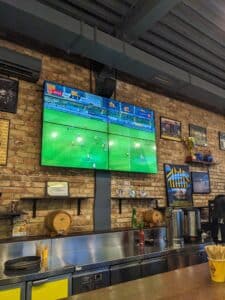
After waiting 10 minutes, however, I realized it would be at least 15 more minutes before I got to the window to order, so I decided to abandon the line and head to the Kairat Sports Pub. This pub, located within the stadium grounds, is an excellent place to watch the game on TV while getting a bite to eat or enjoying a good Kazakh beer. With more than 10 TVs showing the game with Russian-speaking commentators, it was impossible to miss a single moment of the action. After ordering some chechil cheese and a beer, I sat back and enjoyed the second half of the game from the bar.
Despite the game ending 2-2, the energy remained high as the fans came out of the stadium. I turned and took one last look, taking care to note the unique character of Almaty Central Stadium. The stadium itself needed restoration, especially when it came to seating and lighting, but most of the 65-year-old stadium was in good condition. Some areas were already closed for repairs, but there was still plenty of room for thousands of fans to enjoy a sporting event there. While a combination of synthetic turf and natural grass had been implemented in 2010 because of its solid structure and better draining than a purely natural field, there were some spots of turf that caused players to slip more than once. However, it was clear that the stadium and the teams that play there are loved and admired by fans and staff alike. In Kazakhstan, the spirit of “the beautiful game” is as strong as ever.
You Might Also Like
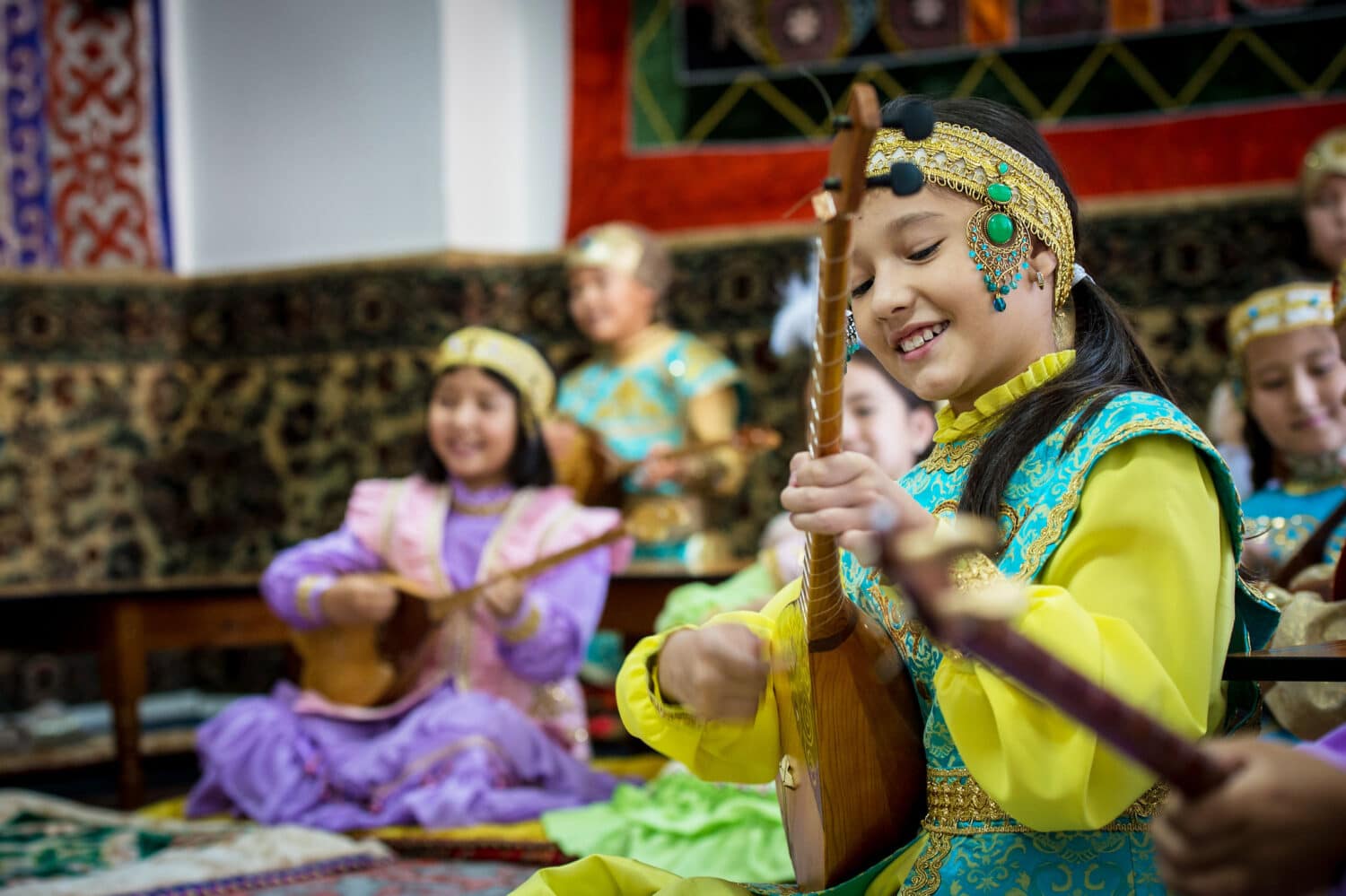
The Dombyra: The Kazakh’s Musical Soul
The dombyra (домбыра) is a lute-style instrument. It is an ancient and quintessential piece of Kazakh culture and identity. In its most popular form, the dombyra has two-strings strung down a long, skinny neck and a pear-shaped body, flat at the front and rounded on the backside. The standard English spelling of dombra is taken […]
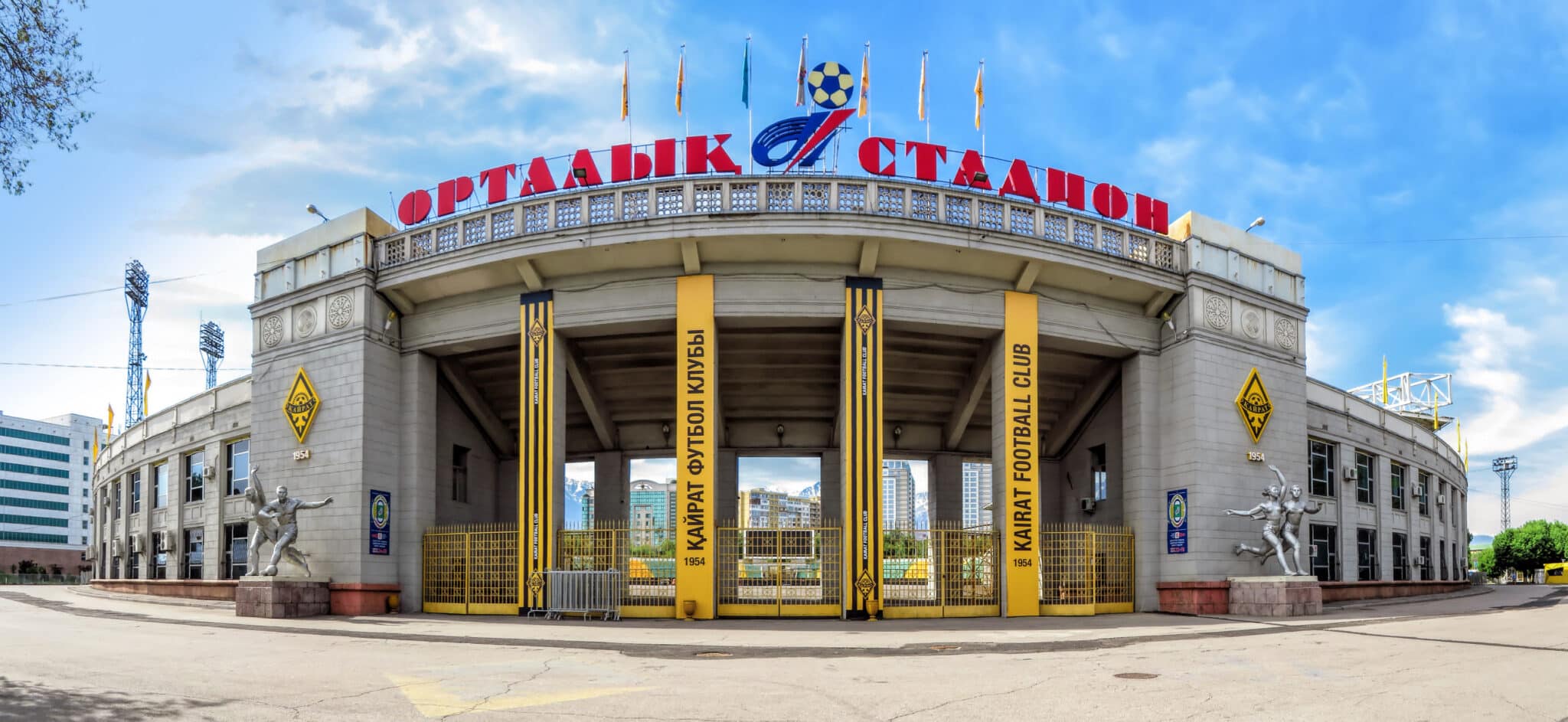
Watching FC Kairat Almaty at Almaty Central Stadium
For traveling soccer fans, attending a live game is a wonderful way to experience a unique part of local culture. Despite being a truly global sport, soccer has a unique culture everywhere it is played. Whether it be the chants or the food at the concessions, there is always something to learn about the local […]
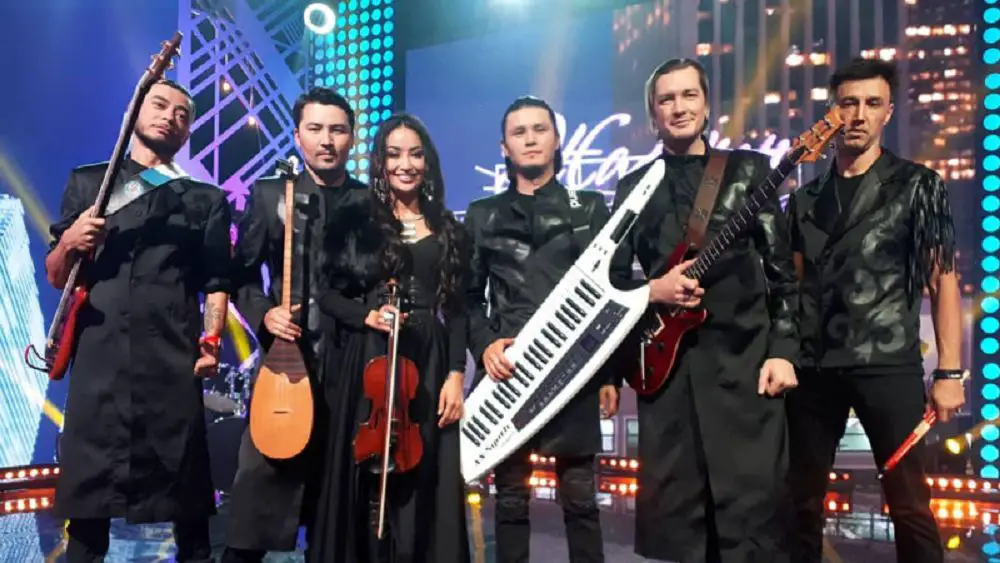
5 Bands Bringing Traditional Kazakh Style to Modern Rock
Here are five Kazakh bands working to bring traditional Kazakh instrumentation and musical styles into modern music. Roksonaki Seamless Kazakh Folk Rock Roksonaki is a Kazakh band that was formed in 2006. Its name means “lightning” in Kazakh, chosen to represent the band’s energetic and electrifying musical style. They are known for their unique fusion […]
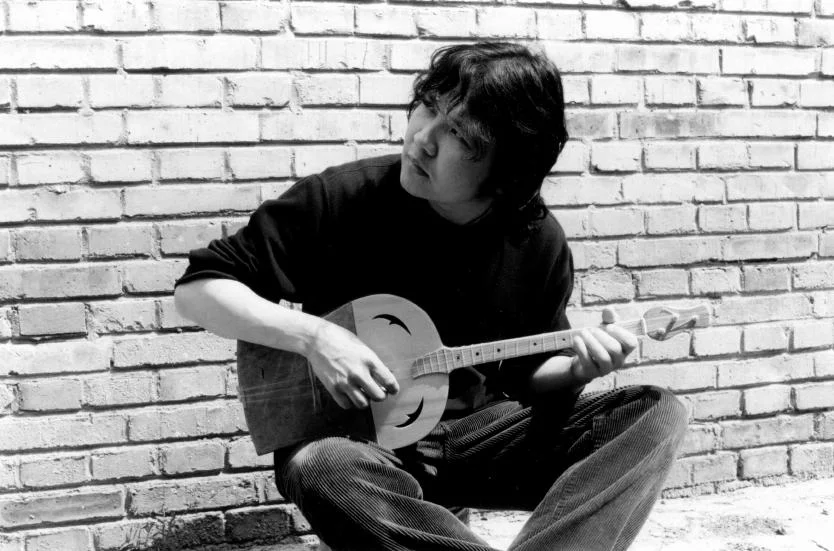
Mamer: Making a New Tradition with Modern Grassland Music
Singer, songwriter, and multi-instrumentalist Mamer Rayes has been an active musician for more than 30 years. While his style of music has shifted over time, it remains deeply rooted in the language, instruments, and folklore of the Khazak culture in which he was raised. Mamer was born in Xinjiang, an autonomous region of northwestern China. […]
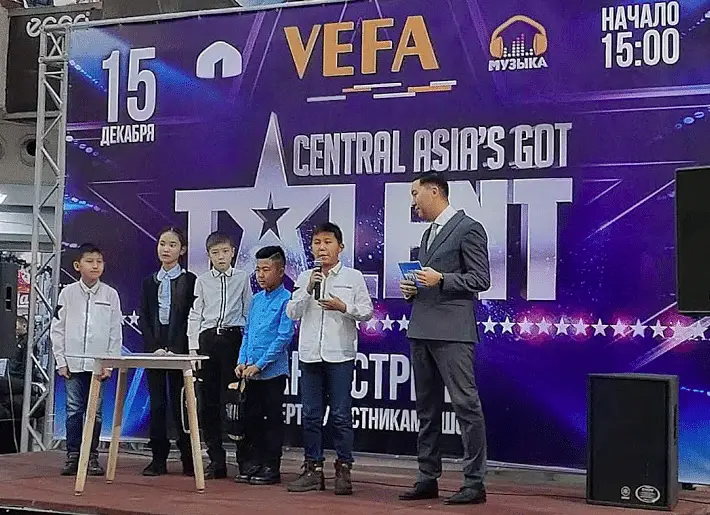
Central Asia’s Got Talent
The London School, where the SRAS students in Bishkek study, is located near a small shopping mall known as the VEFA Center. Due to its proximity, VEFA is where most students do their shopping. It also hosts many rotating attractions, however, in the large presentation space at the main entrance. Sometimes this is marketing for […]


